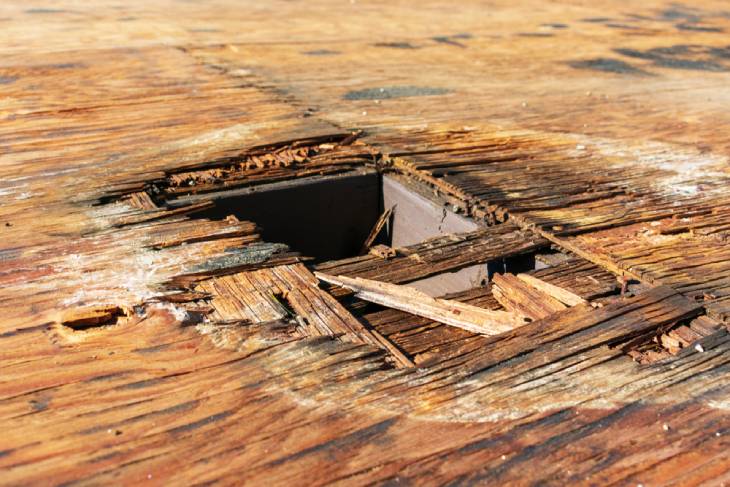
Understanding the distinctions between mitigation, remediation, and restoration is crucial for anyone involved in environmental management or disaster recovery. Mitigation refers to the proactive measures taken to reduce or prevent the impact of potential hazards before they occur. This could involve constructing barriers, implementing better planning practices, or enhancing community preparedness.
Remediation, on the other hand, deals with addressing contaminants or harmful conditions that have already been identified. The primary goal of remediation is to clean up or remove these hazards to protect human health and the environment.
Restoration focuses on returning a damaged ecosystem or community to its original state after the hazard or contamination has been controlled. This process might involve replanting vegetation, replenishing wildlife, or rebuilding infrastructure to restore balance and functionality to the affected area. Each of these approaches plays a vital role in addressing environmental and community challenges.
Understanding Mitigation
Mitigation involves measures to reduce the severity, frequency, or impacts of potential hazards. It focuses on preventative actions and examples that can help to lessen future risks.
Prevention Strategies
Mitigation efforts often start with risk assessment to identify and evaluate potential hazards. Based on this assessment, strategies like zoning laws can be implemented to avoid building on floodplains or near fault lines.
Infrastructure improvements are also key, such as reinforcing buildings to withstand earthquakes or elevating homes in flood-prone areas. Additionally, education and community outreach inform the public about the risks and how to prepare effectively.
Mitigation Examples
There are numerous real-world examples of mitigation. For instance, the construction of seawalls protects coastal areas from storm surges and erosion. Forest management practices, such as controlled burns, can prevent large, uncontrollable wildfires.
Drought-resistant crops are another example, as they ensure agricultural productivity even in dry conditions. Mitigation differs from remediation and restoration in its focus on preventing problems rather than fixing damage after it occurs.
Exploring Remediation
Remediation involves addressing identified problems by eliminating or treating the harmful substances present. It is a key phase that follows mitigation efforts and precedes full restoration.
Removal Techniques
Physical Removal: This involves physically extracting contaminants from affected areas. Techniques include excavation of soil or dredging of sediment. This method is effective for surface-level contamination but may not address deeper issues.
Chemical Removal: Substances like acids or alkalis can neutralize or dissolve contaminants. This is commonly used in industrial spills involving chemicals that cannot be addressed through physical means alone.
Biological Removal: The use of microorganisms to break down pollutants. Bioremediation is a growing field where bacteria and fungi are deployed to clean up oil spills or degrade organic toxins, making it a sustainable choice for long-term remediation.
Remediation Techniques
Thermal Treatments: Involves using heat to detoxify contaminated materials. Thermal desorption heats contaminated soil to vaporize hazardous substances. Incineration completely burns contaminants, providing a thorough but costly solution.
Encapsulation: Encapsulation involves containing contaminants within a barrier to prevent their spread. This is often used when removal is impractical. It is critical in managing hazardous waste to prevent future environmental impact.
Chemical Treatments: Chemical oxidation and reduction transform harmful substances into less toxic forms. These treatments are crucial in situations where contaminants pose an immediate risk to human health and the environment.
Mold Remediation: Companies specializing in mold removal focus on identifying mold sources, removing mold-infested materials, and treating affected areas to prevent recurrence. Mold inspections company are essential to ensure that remediation efforts are comprehensive and effective.
Delving into Restoration
Restoration aims to return an environment or property to its original state. It involves comprehensive efforts to rebuild damaged structures and ecosystems.

Reconstruction Efforts
Reconstruction involves rebuilding structures to their pre-damage state. This often includes structural repairs, replacing materials, and addressing safety concerns. For instance, in flood-affected areas, this may mean reinstalling drywall, flooring, and electrical systems.
The process typically requires skilled labor and adherence to building codes. It’s crucial to assess the integrity of existing materials and remove anything compromised. Additionally, this step helps to eliminate residual hazards like mold or weak foundations. Insurance claims often play a significant role here, providing financial support for the costs incurred.
Restoration Case Studies
Several cases highlight the impact and methods of restoration. Take for example, the restoration of historical buildings after an earthquake. Efforts involved meticulous attention to detail to preserve architectural integrity while ensuring modern safety standards.
Another notable case is the rehabilitation of wetlands. This process often involves reintroducing native plant species and restoring natural water flows altered by construction or pollution. These efforts not only rebuild ecosystems but also improve biodiversity and water quality.
Comparing Processes
Each process—mitigation, remediation, and restoration—plays a unique role in addressing environmental and disaster-related issues. Understanding their differences is crucial for effective project planning and execution.
Key Distinctions
Mitigation involves taking steps to prevent or reduce the adverse effects of potential hazards. This could include building seawalls to guard against flooding or implementing building codes designed to withstand earthquakes. Essentially, mitigation tries to lessen the severity of potential issues before they occur.
Remediation, on the other hand, focuses on cleaning up or containing elements that have already caused harm. This process might involve removing contaminated soil, treating polluted water, or neutralizing hazardous substances. Remediation aims to reduce harm to human health and the environment post-incident.
Restoration aims to return an environment to its original state before the damage occurred. This could include replanting vegetation, rebuilding habitats, or restoring waterways. Restoration strives to bring back the ecological equilibrium and features that were present before the disturbance.
Collaborative Efforts
Each of these processes typically requires a coordinated effort among multiple agencies and stakeholders. For mitigation, planners, engineers, and policymakers work together to develop and implement preventive measures. Effective mitigation can reduce the need for extensive remediation or restoration later on.
For restoration, ecologists, conservationists, and community groups often collaborate. Successful restoration not only relies on technical expertise but also on community engagement and support. This cooperation helps ensure that the restored environment meets both ecological and social needs.